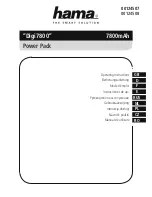
OPERATION
REMOVING THE HEAT GUARD SLEEVE
CAUTION -
Be careful of the hot nozzle!
There is an increased danger of burning when working
without the heat guard.
For working in especially narrow places, the Heat Guard can be removed.
1. To remove or mount the heat guard, the unit must be in the "OFF"
position and be allowed to cool down until cold.
2. With the Hot Air Gun facing away from you, hold the gun in your right
hand and twist the Heat Guard with your left hand in a clockwise
direction then pull off of the main body. (See fig. 4)
3. To mount the Heat Guard back on, slide the Heat Guard over the Nozzle
and push the clips into position.
Always take EXTREME care when using the Hot Air Gun in the
proximity of flammable materials. Heat may also be conducted to
flammable materials that are out of sight.
PLACING DOWN THE HOT AIR GUN
For cooling of the heat gun or to have both hands free for working, it can
be placed down in an upright position on the rear of the housing.
(See fig. 5).
CAUTION -
Be especially careful when working with
the heat gun in an upright position!
There is greater danger of burning yourself on the hot nozzle
and the hot air stream.
NEVER LEAVE THE HOT AIR GUN SWITCHED ON AND UNATTENDED!
Fig. 4
Fig. 5
5


























